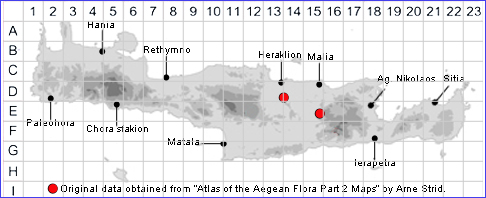SPECIES DESCRIPTION
ASTRAGALUS ECHINATUS
Family and Genus:- See- LEGUMINOSAE/Subgen. TRIMENIAEUS
Common Name:- None
Homotypic Synonyms:- Astragalus dasyglottis, Astragalus dasyglottis var.
pentaglottis, Astragalus echinatus var. pentaglottis, Astragalus pentaglottis
Glottis echinata, Glottis pentaglottis, Tragacantha pentaglottis
Meaning:- Astragalus (Gr) Ankle-bone, (a plant with knotted roots).
Echinatus (L) Covered with prickles, hedgehog-like.
General description:- Hairy short to medium annual.
Stems:-
1) 5-20(-45) cm, sparsely to densely villous.
Leaves:-
1) Imparipinnate,
a) leaflets 5-9 pairs, 4-11 x 2-5 mm, glabrous, above, sparsely white
-pubescent beneath.
Flowers:-
1) Flowering peduncles, equalling the subtending leaf, elongating in fruit.
2) Raceme, very dense, globose, c. 10 mm at anthesis, 15-20 mm in fruit, 10-16
flowered.
3) Calyx, 4-6 mm, broadly campanulate. pilose.
4) Corolla, pale yellow or suffused purple, standard c. 8 mm.
Fruit:-
1) Legume, sessile, 7-9 x 5-6 mm, tapering to a hooked beak, white-villous and
especially on the upper back covered with conspicuous, contorted, flattened and
sometimes branched protuberances 1-2 mm.
2) Seeds, 2.
Key features:-
1) Standard, c. 8 mm
2) Upper back of the legume covered with conspicuous, flattened and contorted
protuberances.
3) Legume, ± cylindrical, at least 2.5 times as long as wide.
Habitat:- Fallow fields, olive groves, open dry shrubby vegetation and wasteland.
0-700 m. on various substrates.
Distribution:- Widespread but scattered in the Mediterranean area from Spain and
Morocco to Greece. Rare on Crete currently known from only two locations.
Flowering time:- Apr-May.
Photos by:- Charalambos Chiotelis

